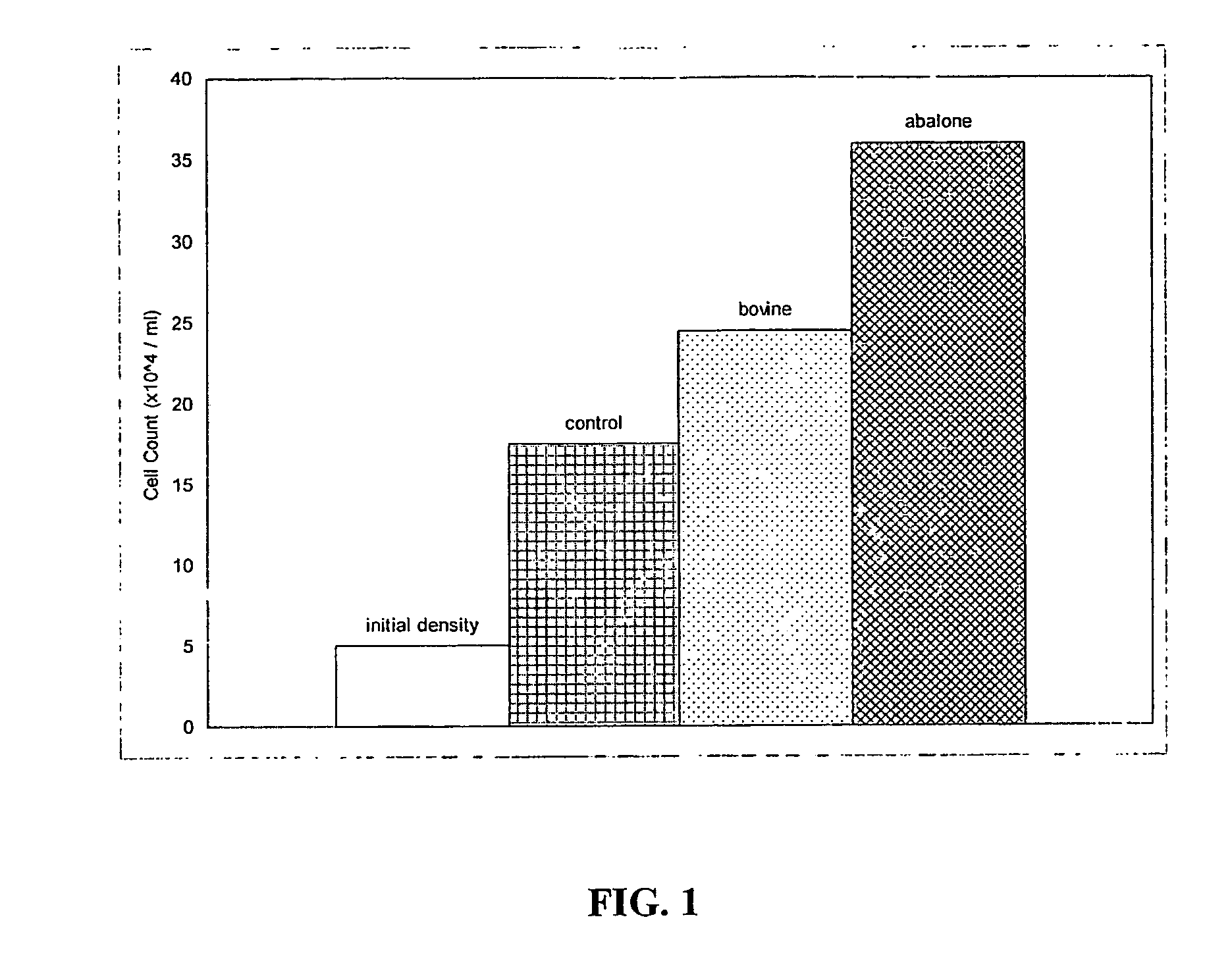Extraction process for a pharmaceutical product
a technology of extraction process and pharmaceutical product, which is applied in the preparation of peptides, connective tissue peptides, animals/human proteins, etc., can solve the problem of not being able to purify native insoluble collagen fibrils in a satisfactory way
- Summary
- Abstract
- Description
- Claims
- Application Information
AI Technical Summary
Benefits of technology
Problems solved by technology
Method used
Image
Examples
example 1
Isolation and Purification
1st Extraction
[0047] Step 1.
[0048] Live abalone were obtained and transferred to a holding tank controlled at 10° C.
[0049] Step 2.
[0050] Abalone were removed from the tank as required.
[0051] Step 3.
[0052] The abalone were rinsed under running water prior to shucking. Working on a chopping board, the animals were shucked with a spatula to remove the body from the shell. The shell was stored for later use.
[0053] Step 4.
[0054] The guts were removed by carefully cutting around the top of the foot with a scalpel and stored for later use.
[0055] Step 5.
[0056] The mouth area was cut away using a scalpel and stored for later use.
[0057] Step 6.
[0058] The pigmentation from the foot area and adductor area was removed by soaking overnight with gentle agitation in 0.2M acetic acid and then scrubbing with a stiff bristled brush under running water.
[0059] Step 7.
[0060] The whole muscle tissue was cut into 1-2″ pieces using a scalpel or knife.
[0061] Step 8....
example 2
Cell Culture
[0098] Step 1.
[0099] Freeze dried type 1 collagen was dissolved at 1-2 mg / ml in 0.1M acetic acid.
[0100] Step 2.
[0101] The collagen solution was sterilized by gently layering a 10% volume of chloroform on the bottom without mixing and allowing to stand overnight in a coldroom.
[0102] Step 3.
[0103] The top (collagen) layer was aseptically removed and transferred to a sterile vessel.
[0104] Step 4.
[0105] The growth surface of the culture vessel (24-well plate) was rinsed with 0.1 ml / cm2 (200μl) of sterile filtered 0.2 g / l EDTA.4Na.
[0106] Step 5.
[0107] The wells were coated with 10 μg / cm2 of collagen solution and spread out to cover the growth surface by repeated aspiration with the pipette tip.
[0108] Step 6.
[0109] A row of 6 wells was left uncoated as a control while other rows were coated with abalone collagen and calf skin collagen respectively.
[0110] Step 7.
[0111] The coated plate was incubated at 37° C. for 4-5 hours then sanitised by standing under UV light...
PUM
| Property | Measurement | Unit |
|---|---|---|
| Time | aaaaa | aaaaa |
| Time | aaaaa | aaaaa |
| Time | aaaaa | aaaaa |
Abstract
Description
Claims
Application Information
 Login to View More
Login to View More - R&D
- Intellectual Property
- Life Sciences
- Materials
- Tech Scout
- Unparalleled Data Quality
- Higher Quality Content
- 60% Fewer Hallucinations
Browse by: Latest US Patents, China's latest patents, Technical Efficacy Thesaurus, Application Domain, Technology Topic, Popular Technical Reports.
© 2025 PatSnap. All rights reserved.Legal|Privacy policy|Modern Slavery Act Transparency Statement|Sitemap|About US| Contact US: help@patsnap.com


